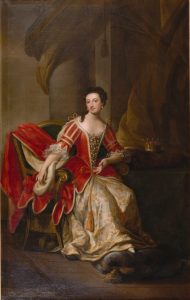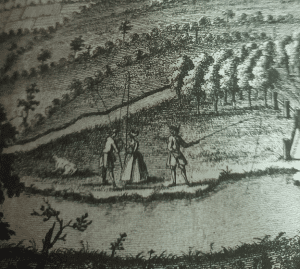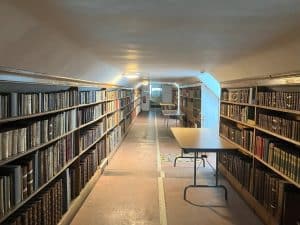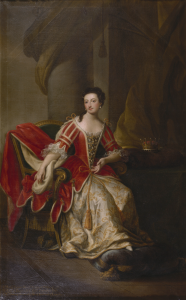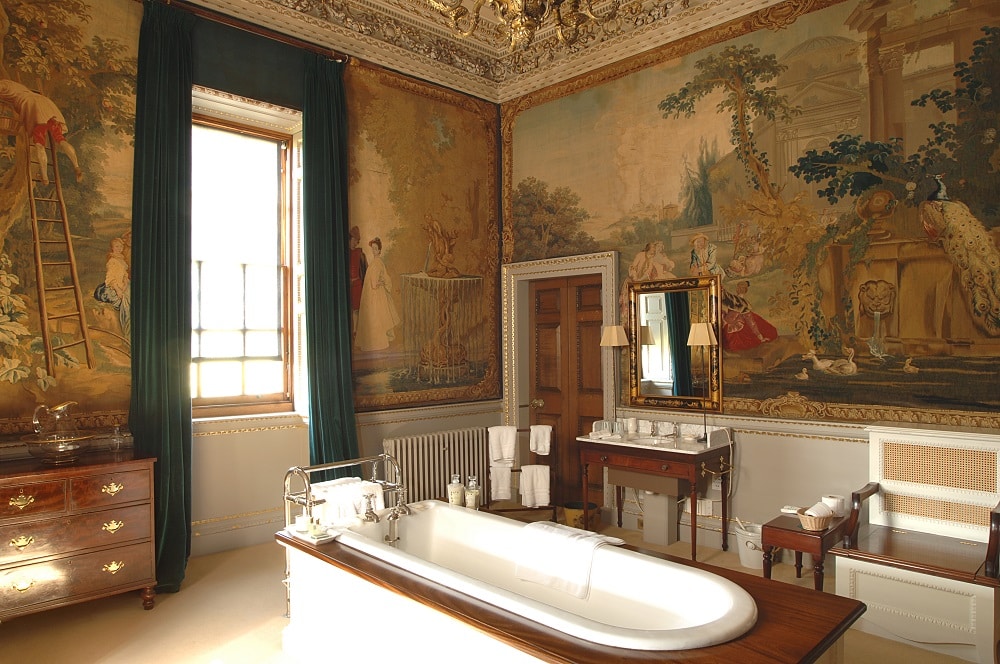
Bath Tap..estries
March 9, 2021 | Treasure tales and archive snippets | 5 minute read

One of the most decadent rooms here at Holkham is the Blue Tapestry Bathroom in Strangers’ Wing, which is still used by guests of the Earl and Countess of Leicester. As well as the most outrageously large bath, it is decorated with a series of tapestries which give the room its name.
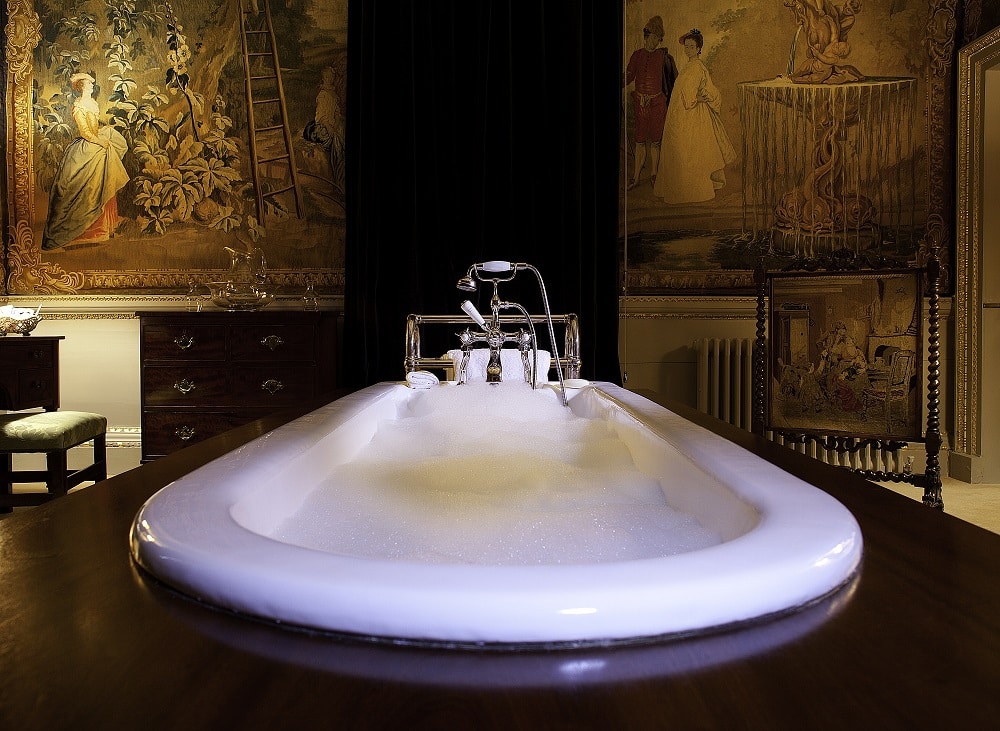
Designed to tap into a pastoral ideal which was popular in the 18th century, these tapestries were revolutionary in their originality. The designs themselves were pastiches after the paintings of the French artist Antoine Watteau (1684-1721), particularly using characters from two paintings, l’Embarquement pour Cythère and the Fête Champêtre, which has now been reattributed to Watteau’s follower Jean-Baptiste Pater.
Whilst appearing to be unified compositions, these designs are in fact collages, with figures taken from a variety of different images produced by Watteau and by two other artists, Nicholas Lancert (1690-1743) and Jean-Baptiste Pater (1695-1736). All the figures were taken from a series of prints published after works by the artists, the last of which was released in 1734. Helen Wyld, now chief curator for National Museums Scotland, has written at length about the tapestries and suggests that this technique was intentional, designed to create a particular style of tapestry. It is also true that by cherry picking figures from a variety of sources would have saved money as it removed the need to commission new designs.
The creator of these tapestries was a chap called William Bradshaw (1700-1775). Unlike traditional tapestry manufacturers, Bradshaw was primarily an upholsterer by trade. This meant he worked to supply wealthy clients with furnishings and other fabrics, alongside manufacturing tapestries. From 1740 onwards, he worked extensively with Thomas Coke, 1st Earl of Leicester, supplying furniture both for Holkham and for the Coke’s London home, Thanet House. Intriguingly, he also oversaw the competition of an unfinished set of tapestries which hung in Lady Leicester’s bedroom. In 1732 Bradshaw had set up new premises on the corner of Soho Square. Soho had become the epicentre of the English tapestry manufactory following the collapse of the Royal Mortlake manufactory in 1703; many tapestry makers formerly associated with Mortlake set up their workshops in and around Soho, giving rise to the moniker of ‘Soho Tapestries’ for any tapestry produced in London at the time.
The first set of these tapestries was created for the 8th Earl of Thomond sometime between 1734 and 1740, when they were installed in the Earl’s house, Shortgrove. These first tapestries were the only ones to be signed by Bradshaw. In 1741, following the Earl’s death, the whole estate was put up for sale, and the tapestries were purchased by the 4th Earl of Dysart who took them to Ham House where they remain in situ today.
The Holkham tapestries are thought to be later, though an exact date for when they arrived at the house is not known; it has been speculated that they were supplied by Bradshaw’s successors, George Smith Bradshaw (1717-1812) and Paul Saunders (1722-1771), who continued to supply Thomas Coke with furniture after William Bradshaw’s retirement in 1755.
The set at Holkham and at Ham are the only two sets which remain in their 18th Century locations, though we know that the design was immensely popular, with the remains of 18 different weavings surviving throughout the country.
The Holkham tapestries have been hung in the bathroom since its completion and are first listed in the earliest description of the house, published in 1773, although at that date the room functioned as a bedchamber.
As well as the set of tapestries hanging in the Blue Tapestry Bathroom, a second set hangs in another bedroom in Strangers’ Wing. Although part of the same scheme, these tapestries are mostly of different designs to those in the bathroom, however, there are a few figures which can be identified in several pieces – like an 18th Century Where’s Wally. This pair of lovers can be seen in panels in both the bedroom and bathroom.
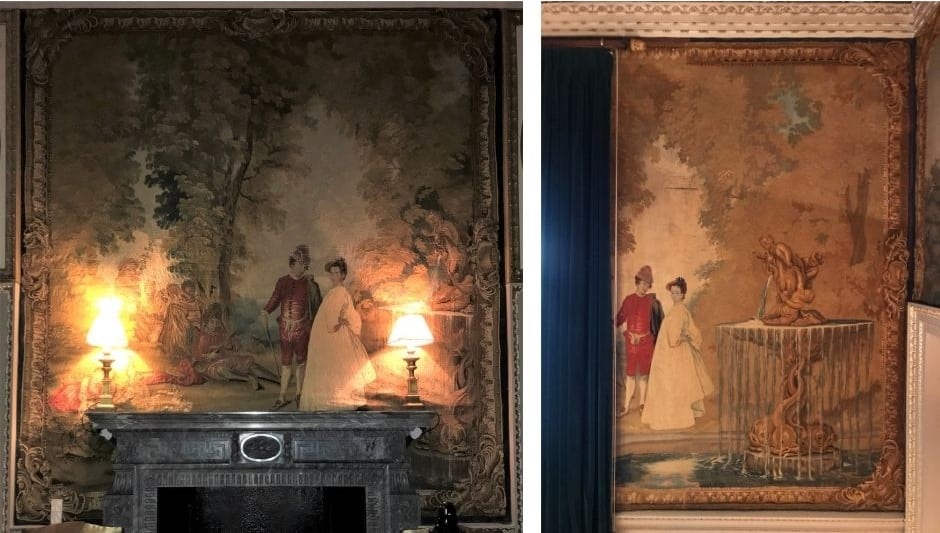
Left: A pair of lovers by a fountain. Right: The same pair of lovers, by the same fountain
Interestingly, in two different panels both in the bedroom, the same three people playing music can be seen in two separate panels.
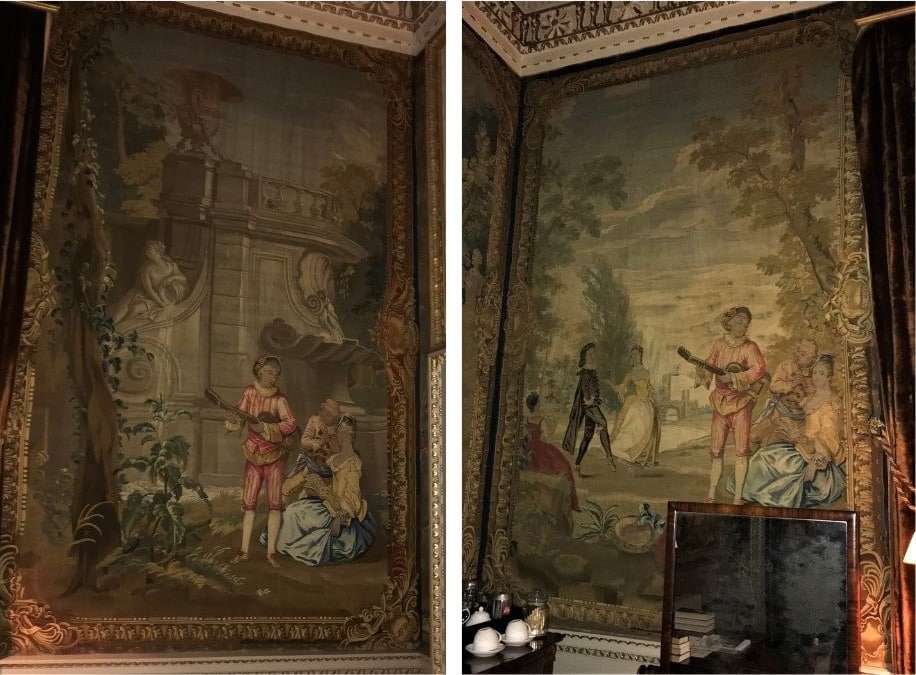
This trio make a repeat appearance
A tapestry panel also from the Pastoral design is presently undergoing conservation work carried out by our team of Hall Volunteers. This work – normally displayed as you enter the Chapel – suffered water damage in 2017, and following wet cleaning is now being strengthened before it will be rehung. You can read all about it here (https://www.holkham.co.uk/blog/post/tapestry-project)
View all latest blog posts here.
Back to Journal Back to Journal
